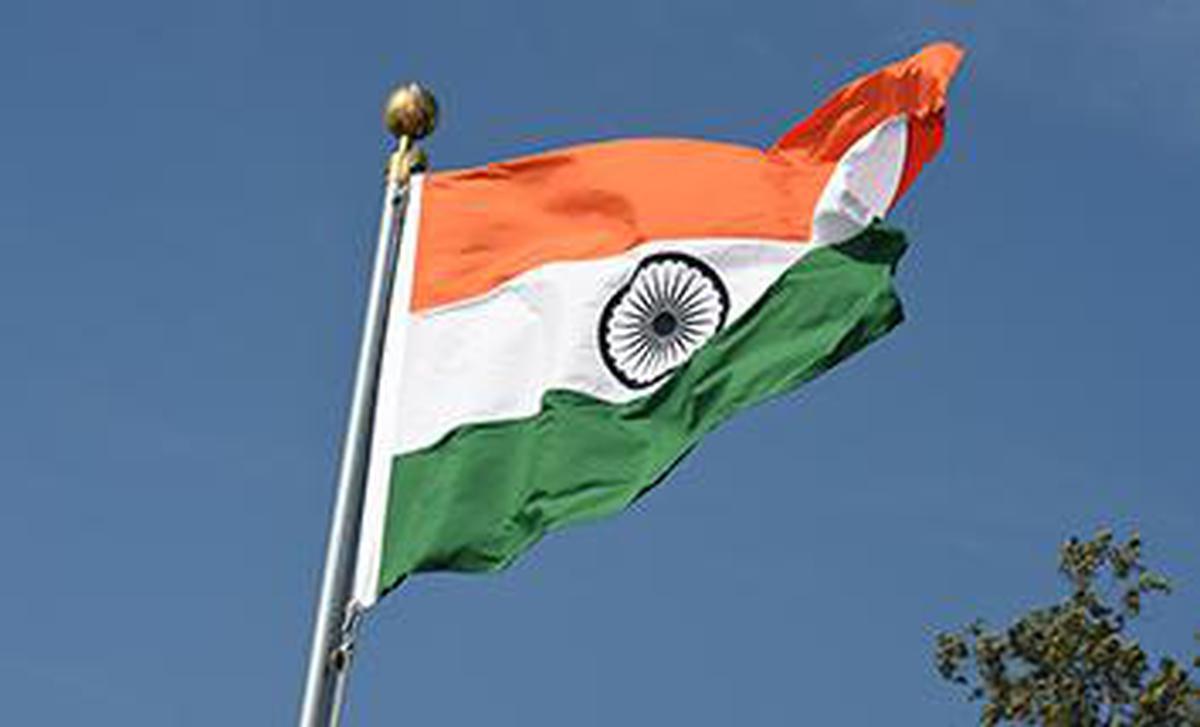
The flag is not just a vision for the future but also reflects the values of the rich and illustrious past of India
In the Mahabharata, after Duryodhana is vanquished and the Kurukshetra war concludes, Lord Krishna leads Arjuna on his chariot to a secluded part of the battlefield. He then frees the horses and pushes Arjuna from the chariot. Just then, Lord Hanuman, residing in the flag on top of Arjuna’s chariot, vanishes leaving a bare cloth fluttering. The chariot explodes leaving behind embers. Lord Krishna explains to Arjuna that the force of divine weapons used by Bheeshma, Drona and Karna would have disintegrated the chariot a long time ago. It was only Lord Hanuman’s presence on the flag of the chariot that shielded him.
Since the dawn of civilisation, flags have had a special place as a symbol of belonging and protection and to rally people together. Stretching back to times immemorial, flags have been a part of the Indian tradition, symbolising glory and dharma. From the Seval Kodi held high by Kartikeya, the Surya flag carried by Lord Ramachandra in his quest to Lanka, King Yudhishtir’s Golden Moon flag of the Treta Yuga to the Patita pavana bana mysteriously flying in the opposite direction of the wind at the Jagannath Temple, Puri, flags have been a part of our cultural heritage in all four yugas. Similarly, the Nishan Sahib that depicts the temporal (Miri) and the spiritual (piri) has a special place in the heart of every practising Sikh. Indeed, Bharatvarsha has a rich history and tradition of using flags and symbols throughout the ages in various forms.
Therefore, it is not surprising when this tradition is continued while building India as a modern nation state, drawing from her civilisational ethos. The flag, therefore, is not just a vision for the future, but the values and foundations of our rich and illustrious past. On July 22, 1947, the Constituent Assembly adopted our National Flag. The flag that was finally chosen underwent several changes since it was originally designed by Pingali Venkayya in 1923. Venkayya was not just the architect of the flag but also a freedom fighter. He was known as Jhanda Venkayya as he published a book in 1916 on 30 designs for the Indian flag. August 2 marks his 146th birth anniversary and citizens across this country will now know more of his contributions in designing the flag that we have today.
Since Independence, our relationship with the flag had been more formal and institutional rather than personal. The Har Ghar Tiranga campaign launched by Prime Minister Narendra Modi aims to change this forever. The initiative aims to encourage people to bring our flag into our homes and hoist it to mark the 75th year of India’s Independence.
Community spirit
The idea behind the initiative is to invoke a sense of ownership in the people and to celebrate Azadi ka Amrit Mahotsav in the spirit of Jan Bhagidari (community participation).
The campaign aims to have citizens hoisting our National Flag in their homes between August 13 and 15. Various events involving people from all walks of life will be organised at various locations connected with the freedom struggle. This will allow the new generation to discover the many threads of our freedom struggle, while older generations and communities reconnect to the events that led to a free India.
As this is a ground-up initiative, the role of the government has been that of a facilitator. An initiative of such magnitude requires meticulous planning and execution.
First, the Flag Code was changed to make the flag more accessible and thus give every Indian the unique opportunity to hoist the flag at their homes. Subsequently, the government has taken various steps to ensure the supply of flags across the country. Flags are now available in all post offices in the country. State governments have tied up with various stakeholders for the supply of flags. The flag will be available on the government’s e-market marketplace (GEM) portal, on e-commerce portals, and with various self-help groups (SHGs).
Finding resonance
Since its launch, the Har Ghar Tiranga campaign has been resonating across India. This is not only because of the inherent patriotism embedded in every Indian but also because we feel that the nation is heading in the right direction. Today, when the youth of this nation see our flag, they see hope for a brighter tomorrow. A mother sees opportunities for herself and her family. The soldiers see 135 crore Indians saluting their bravery and praying for their well-being. A civil servant sees in the flag a commitment to implement the vision of the government as enshrined in the Constitution.
On July 22, 1947, as part of the resolution on the flag in the Constituent Assembly, Sarojini Naidu said: “Remember, under this flag, there is no prince and there is no peasant, there is no rich and there is no poor. There is no privilege; there is only duty and responsibility and sacrifice. Whether we be Hindus or Muslims, Christians, Sikhs or Zoroastrians and others, our Mother India has one undivided heart and one indivisible spirit. Men and women of reborn India, rise and salute this flag. I bid you, rise and salute the flag.”
As we hoist the flag as a part of the Har Ghar Tiranga initiative, these very thoughts will be echoing in every Indian’s hearts.





















